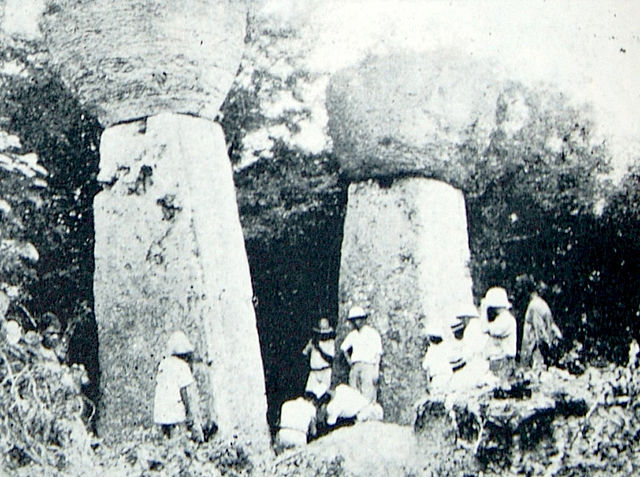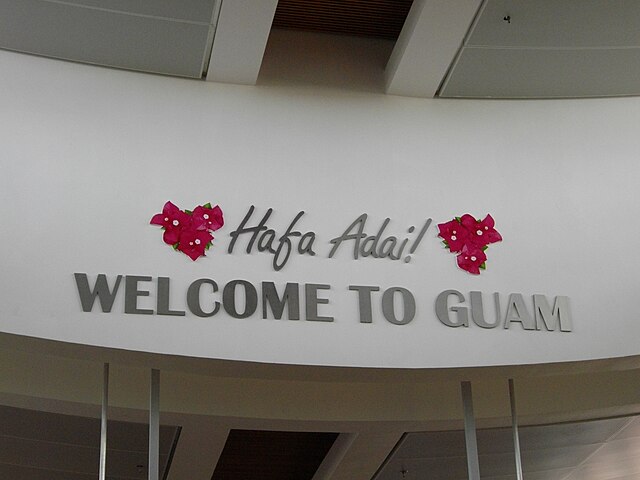The Mariana Islands, also simply the Marianas, are a crescent-shaped archipelago comprising the summits of fourteen longitudinally oriented, mostly dormant volcanic mountains in the northwestern Pacific Ocean, between the 12th and 21st parallels north and along the 145th meridian east. They lie south-southeast of Japan, west-southwest of Hawaii, north of New Guinea and east of the Philippines, demarcating the Philippine Sea's eastern limit. They are found in the northern part of the western Oceanic sub-region of Micronesia, and are politically divided into two jurisdictions of the United States: the Commonwealth of the Northern Mariana Islands and, at the southern end of the chain, the territory of Guam. The islands were named after the influential Spanish queen Mariana of Austria following their colonization in the 17th century.
Tropical dry forest on Saipan
Ruins of Guma Taga on Tinian. The pillars/columns are called latte (pronounced læ'di) stones, a common architectural element of prehistoric structures in the Mariana Islands, upon which elevated buildings were built. Earthquakes had toppled the other latte at this site by the time this photo was taken; an earthquake in 1902 toppled the one seen on the left, and today only the one on the right remains standing.
Reception of the Manila Galleon by the Chamorro in the Ladrones Islands, c. 1590 Boxer Codex
A stamp from the Marianas' late Spanish colonial period, 1898–1899
Chamorro is an Austronesian language spoken by about 58,000 people, numbering about 25,800 on Guam and about 32,200 in the Northern Mariana Islands and elsewhere. It is the historic native language of the Chamorro people, who are indigenous to the Mariana Islands, although it is less commonly spoken today than in the past. Chamorro has three distinct dialects: Guamanian, Rotanese, and that in the other Northern Mariana Islands (NMI).
The common greeting "Hafa Adai" at Antonio B. Won Pat International Airport on Guam. "Hafa" here is not written as "Håfa" as in the newer, standardised orthography.





